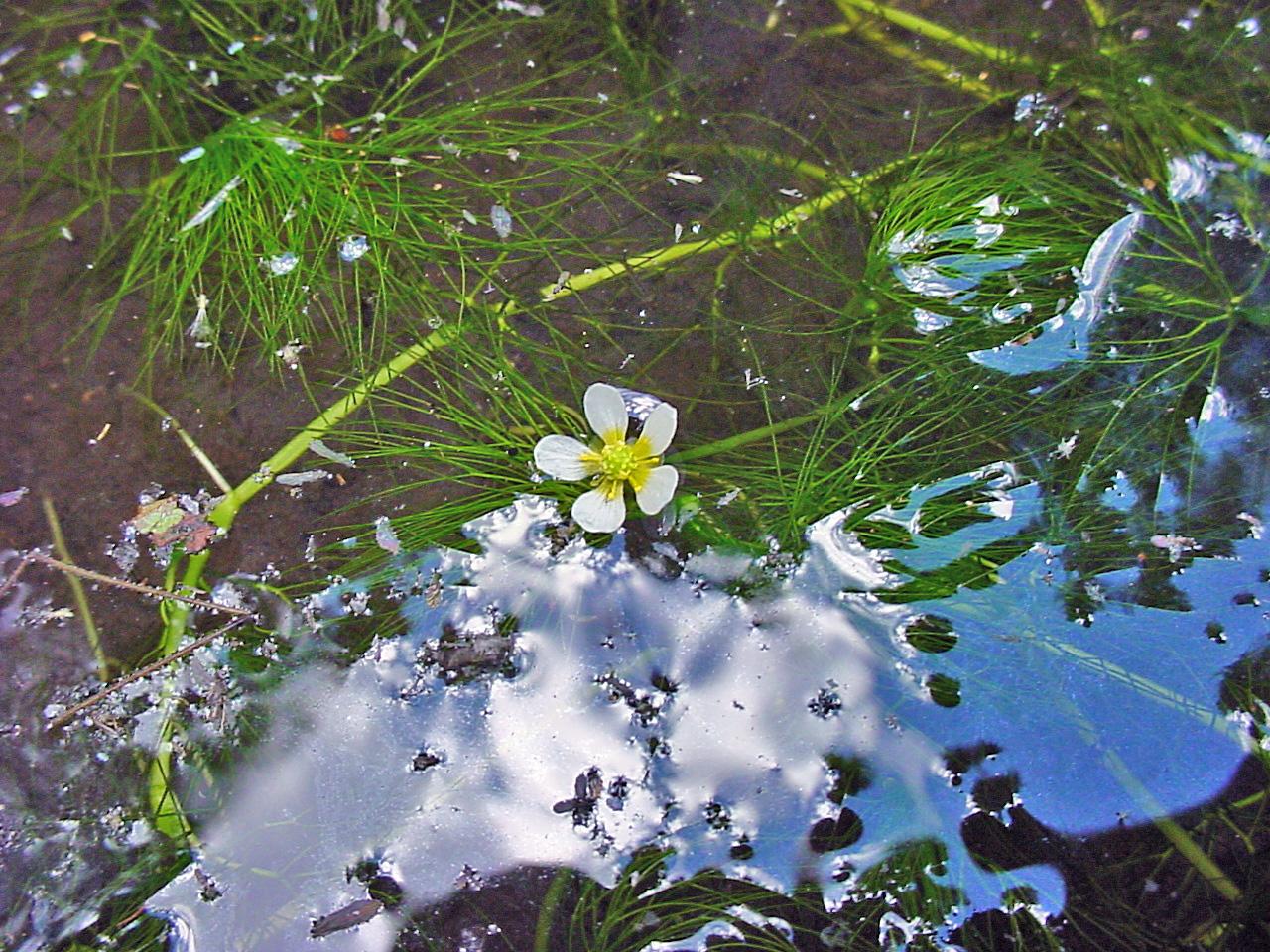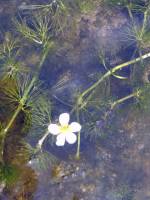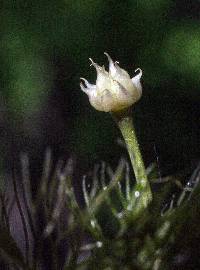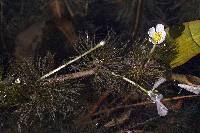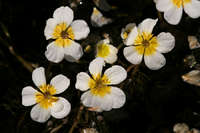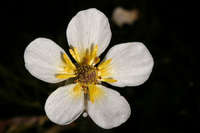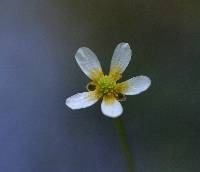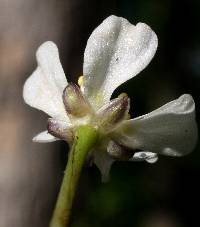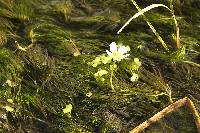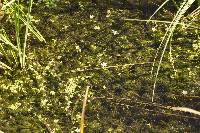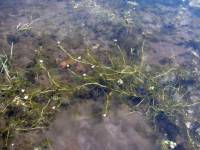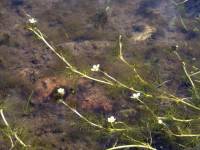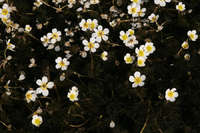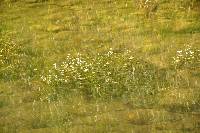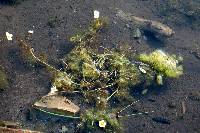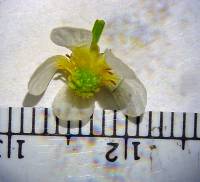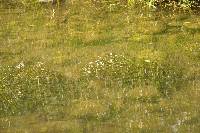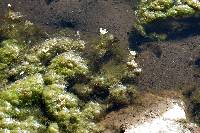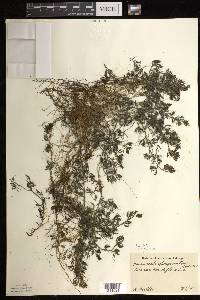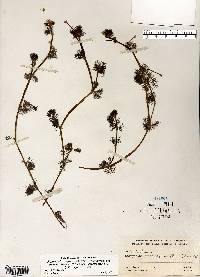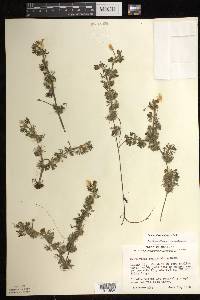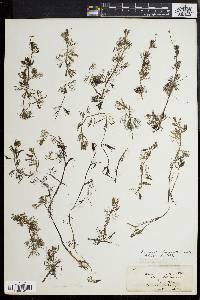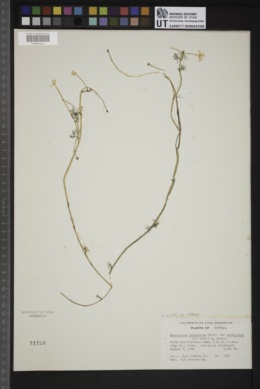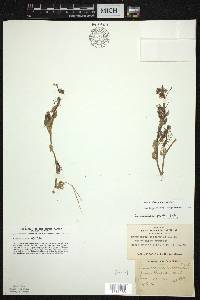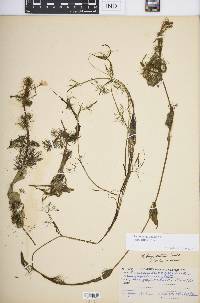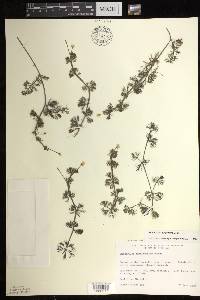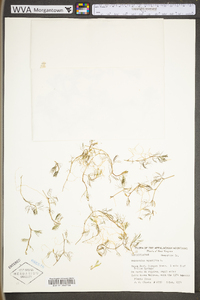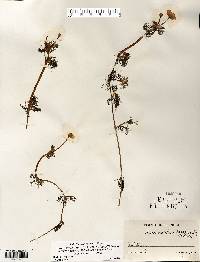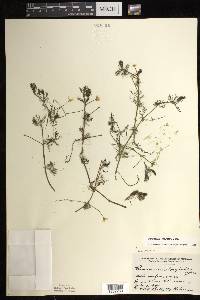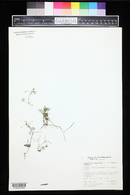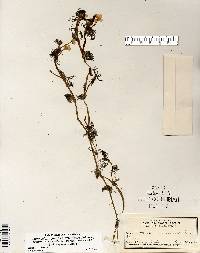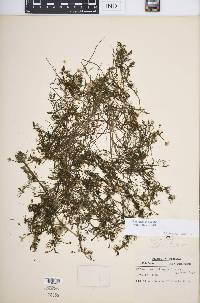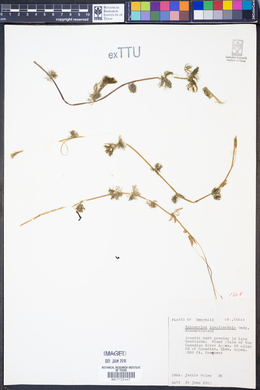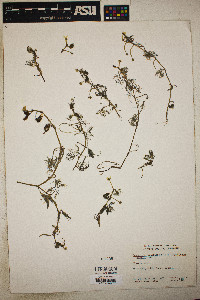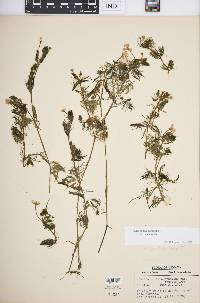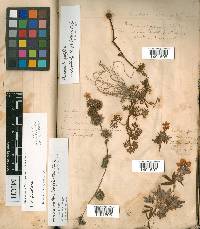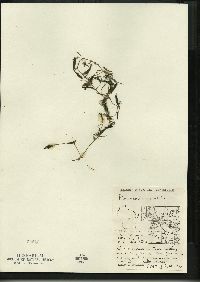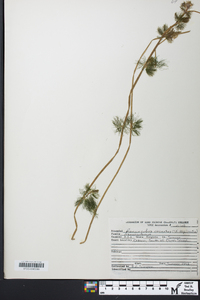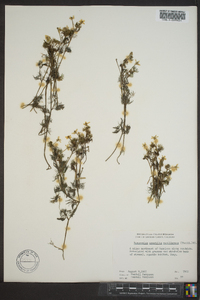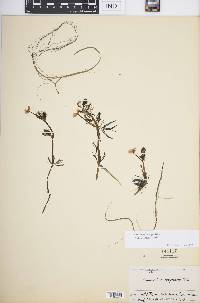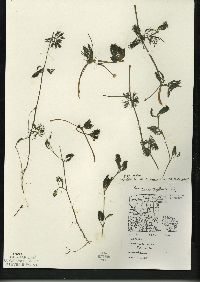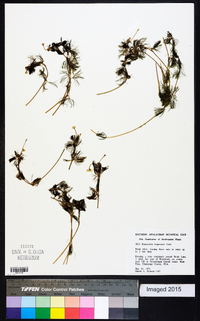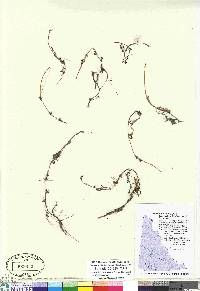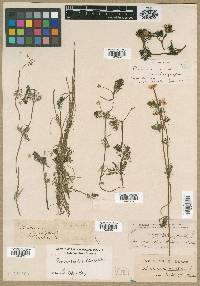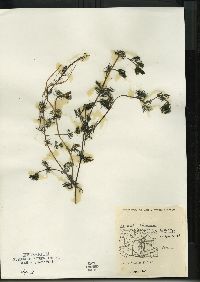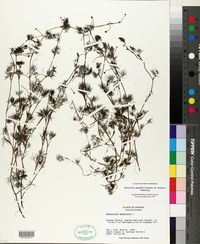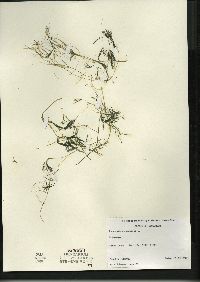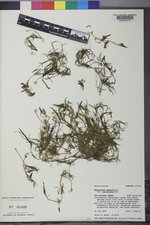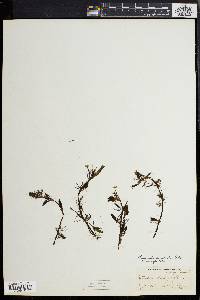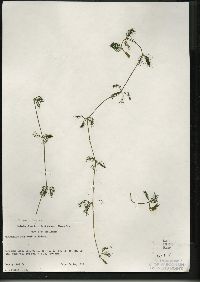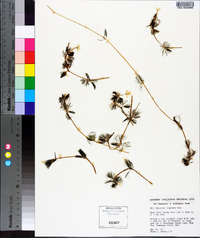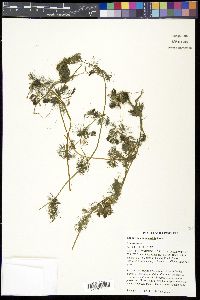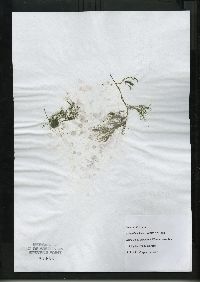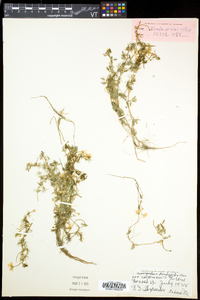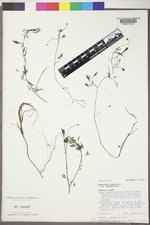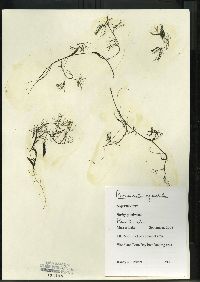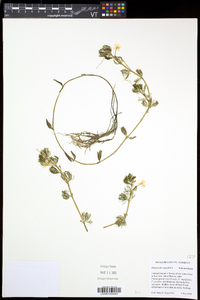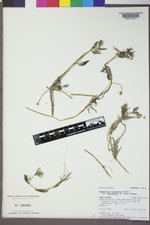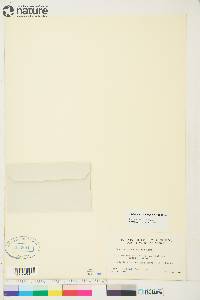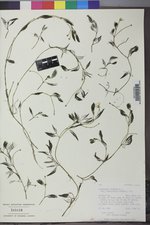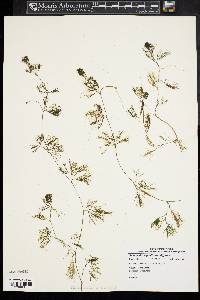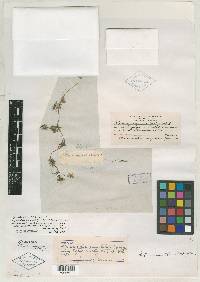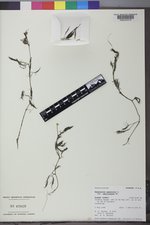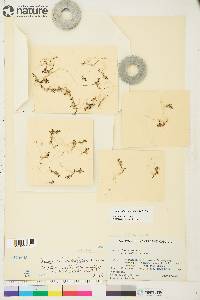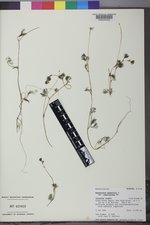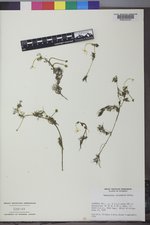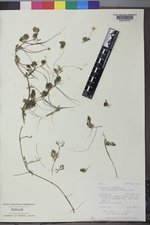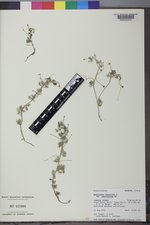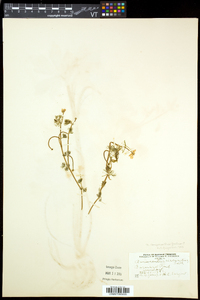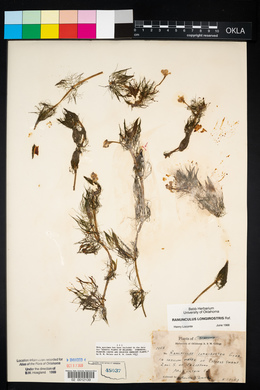
|
|
|
|
Family: Ranunculaceae
Long-Beak Water-Crowfoot, more...Short-Beak Water-Crowfoot, hairleaf water buttercup, longbeak buttercup, thread-leaf water-crowfoot, White Water-Crowfoot
[Batrachium circinatum (Sibthorp) Reichenb., moreBatrachium circinatum subsp. subrigidum (W. Drew) A. Löve & D. Löve, Batrachium flaccidum (Pers.) Rupr., Batrachium longirostre (Godr.) F.W. Schultz, Batrachium porteri (Britt.) Britt., Batrachium trichophyllum (Chaix) F.W. Schultz, Ranunculus amphibius James, Ranunculus aquatilis var. calvescens (W. Drew) L. Benson, Ranunculus aquatilis var. capillaceus (Thuill.) DC., Ranunculus aquatilis var. harrisii L. Benson, Ranunculus aquatilis var. lalondei L. Benson, Ranunculus aquatilis var. longirostris (Godr.) Lawson, Ranunculus aquatilis var. porteri (Britt.) L. Benson, Ranunculus aquatilis var. subrigidus (W. Drew) Breitung, Ranunculus aquatilis var. trichophyllus (Chaix) Gray, Ranunculus circinatus auct. non Sibthorp, Ranunculus circinatus var. subrigidus (W. Drew) L. Benson, Ranunculus flaccidus Pers., Ranunculus longirostris Godr., Ranunculus porteri , Ranunculus subrigidus W. Drew, Ranunculus trichophyllus var. calvescens W. Drew, Ranunculus trichophyllus var. trichophyllis Chaix, Ranunculus trichophyllus var. trichophyllus , Ranunculus trichophyllus var. typicus W. Drew, Ranunculus usneoides Greene] |
Leaves all filiform-dissected. Achenes 1-1.8 × 0.8-1.2 mm; beak 0.2-1.2 mm. 2 n = 16, 32, 48. Flowering spring-summer (Apr-Sep). Ponds, lakes, streams, ditches, edges of rivers; 0-3200 m; Greenland; Alta., B.C., Man., N.B., Nfld., N.W.T., N.S., Ont., P.E.I., Que., Sask., Yukon; Ala., Alaska, Ariz., Ark., Calif., Colo., Conn., Del., Idaho, Ill., Ind., Iowa, Kans., Ky., Maine, Md., Mass., Mich., Minn., Mo., Mont., Nebr., Nev., N.H., N.Mex., N.J., N.Y., N.C., N.Dak., Ohio, Okla., Oreg., Pa., R.I., S.C., S.Dak., Tenn., Tex., Utah, Vt., Va., Wash., W.Va., Wis., Wyo.; Mexico; Eurasia; Australia. Populations of Ranunculus aquatilis var. diffusus with long achene beaks are not known from the Old World. In North America, beak length varies continuously over the whole range given for the variety, and separation of plants with unusually long beaks as R . longirostris is not tenable. Ranunculus aquatilis var. diffusus shows geographic variation, and some regional forms have been recognized as separate varieties. Dwarf creeping arctic plants may be called R . aquatilis var. eradicatum , plants with sparsely pubescent or glabrous receptacle from eastern North America may be called R . aquatilis var. calvescens , plants with linear, noncapillary leaf segments from the northern Great Basin may be called R . aquatilis var. porteri , and very robust plants from Oregon and northernmost California may be called R . aquatilis var. harrisii . Extreme forms of these races are recognizable, but they intergrade and many specimens cannot be confidently assigned to one or another of them. The Eurasian species Ranunculus circinatus Sibthorp has been reported from North America. These reports are based on specimens of R . aquatilis var. diffusus .
Stems submersed, elongate, branched; lvs submersed, ternately or binately dissected into filiform segments, relatively firm, not collapsing when withdrawn from water, 1-2 cm, the free petiole none or much shorter than the expanded, pubescent stipular part; fls at the water-surface, white, 1-1.5 cm wide; stamens 10-20; achenes (7-)15-25, with a straight, slender beak 0.7-1.5 mm. Ponds and slow streams; sw. Que. to Del., Tenn., and Ala., w. to Sask., Ida., Nev. and Tex. May-July. Gleason, Henry A. & Cronquist, Arthur J. 1991. Manual of vascular plants of northeastern United States and adjacent Canada. lxxv + 910 pp. ©The New York Botanical Garden. All rights reserved. Used by permission. Resembling nos. 27 [Ranunculus trichophyllus Chaix] and 29 [Ranunculus longirostris Godr.], and intergrading with no. 29; lvs of no. 29; achenes of no. 27, but more numerous, mostly 30-45(-80); stamens mostly 5-10; mature pedicels recurved; 2n=16. Ponds and slow streams; irregularly from Que. to B.C., and s. to Del., Mich., Minn., S.D., Tex., and Mex. June-Sept. (R. circinatus var. s.) True R. circinatus Sibth. is here interpreted as being strictly Eurasian. Gleason, Henry A. & Cronquist, Arthur J. 1991. Manual of vascular plants of northeastern United States and adjacent Canada. lxxv + 910 pp. ©The New York Botanical Garden. All rights reserved. Used by permission. From Flora of Indiana (1940) by Charles C. Deam [Deam recognizes two white flowers species of buttercup. The sessile leaved form] is our most common white-flowered buttercup. Its habitat is similar to that of the preceding species [Ranunculus trichophyllus] and it is more or less frequent in the lake area, becoming rare south of it. [Deam's R. trichophyllus, a form with larger petiolate leaves, is] found infrequently in shallow water on the shores of lakes and bayous of streams and in ditches. …… Indiana Coefficient of Conservatism: C = 7 Wetland Indicator Status: OBL |
|
|
|
This project was made possible in part by the Institute of Museum and Library Services [MG-70-19-0057-19].
Powered by Symbiota

